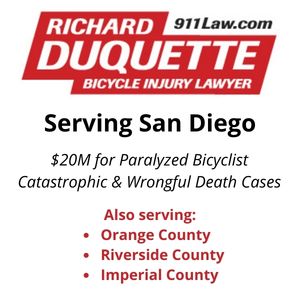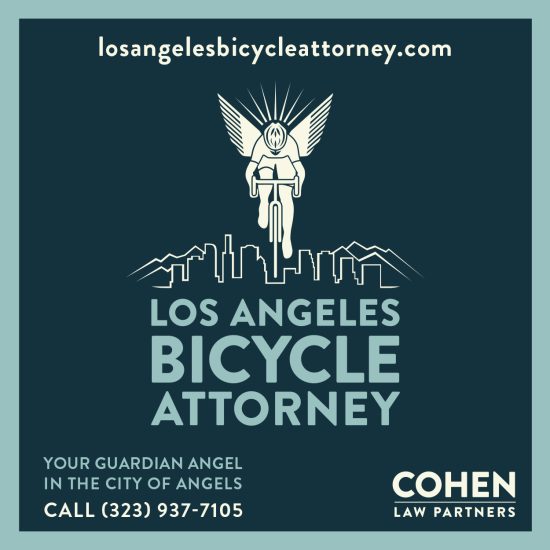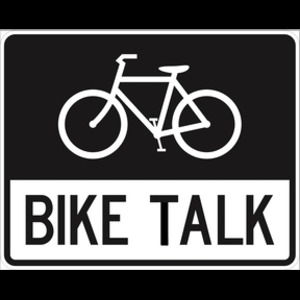Let’s take a look at something a little more involved that just changing signage.
Like changing attitudes, to start.
As Joe Linton noted in a recent comment, a bike boulevard can be a pretty hard sell. The name alone is enough to enflame rampant NIMBY-ism among local homeowners. And leave city officials reluctant to take on a similarly enraged mob ever again.
The simple fact is, not many people want a bike boulevard on their street. At least, not until they understand what it actually means.
And that’s our fault. As I’ve noted before, cyclists don’t have to be sold on the concept. The name alone tells us everything we need to know. Problem is, we expect everyone else to be as excited about it as we are.
It just doesn’t work that way.
On the other hand, the solution is simple. Instead of speaking in terms of our interests, we need to look at it in terms of what’s in it for people who don’t bike.
And there’s a lot in it for local homeowners.
By diverting traffic onto other streets, local residents can finally free themselves from the headaches of high-speed traffic in front of their homes. No more heavy trucks or hot-rodding hooligans in the middle of the night. And no more commuters taking a shortcut through a quiet residential neighborhood to bypass congested boulevards, turning a formerly peaceful street into a mini-throughway.
Eliminating through traffic can give residents a quieter, more livable neighborhood, where children can play outside and families stroll along peaceful sidewalks. It can also mean a more attractive place to live, as homeowners take advantage of the opportunity to clean up their streets, and the barriers themselves provide opportunities for beautification projects.
After all, nothing says barriers have to be k-rails; they can just as easily be planters, artwork, fountains or any number of similarly property-value enhancing enhancements. And that’s another key, because property values often go up as the newly peaceful neighborhood becomes more desirable to home buyers.
Then you tell them the best part. It won’t cost them a dime. Because one feature of this wonderful new street plan is something called a bike boulevard — a gap in those barriers that allows bikes and pedestrians to pass through — the DOT will pick up the entire tab.
They don’t even have to make a commitment. The whole thing can be installed on a temporary basis to prove how well it works before they agree to a permanent installation.
Now how many homeowners wouldn’t beg for something like that? And once people in other neighborhoods see it, chances are, they’ll beg for one of their own.
All you have to do is identify a street where homeowners are already fed up with traffic. Which pretty much means any street with speed bumps.

Military Ave. looking north from National Blvd.
Like Military Avenue, for instance, which runs between Pico and Palms just a few blocks east of the 405 Freeway.
Since the street parallels busy Sepulveda and Westwood Boulevards, it’s often used by drivers looking for an easy way to bypass traffic. At least two rounds of speed bumps have already been installed to reduce and slow traffic; when the first didn’t have the desired effect, the response was to install more and larger humps — with little or no apparent decrease in traffic.
Which means they’d probably jump at the chance to block their street to through traffic, while providing full access to local residents. Even if it meant putting up with more of those damn cyclists.
And Military would make an ideal bike boulevard.

Military between National and Palms
It’s straight and flat for most of the way, other than a small hill on the south end. The northern section is more than wide enough for bikes, cars and parking on each side, while the narrower southern section is lightly traveled and easily shared.
A bikeway on Military could also be extended south to connect with the existing bike paths on Venice Blvd. And it would only require a few new stop lights on Butler Avenue at Pico and Olympic to provide an easy link from Venice to Santa Monica Blvd.
Evidently, I’m not the only one to notice this.
The new bike plan shows Military as a “Bike Friendly Street” from Pico to Venice (page 67) — whatever that eventually ends up meaning.
Maybe that means they’re planning to make it a bike boulevard, but don’t want to use that name; maybe it means nothing more than sticking up a few signs indicating it as a preferred route for bikes. Or maybe they have no idea what they’re going to do there, but recognize that it’s an ideal place to do… something.
Then again it could just be a line on a map. One that never results in anything on the street, like so much of the previous bike plan.
That would be a lost opportunity for everyone.
Including homeowners.
………
More on bike racks, or the lack thereof: good and bad placement in West Hollywood; LAPD ignores Crime Prevention Through Environmental Design. The next Dim Sum Ride rolls through Old Town Pasadena this weekend. A proposed new development in the Valley straddles the Tujunga Wash and could interface better with transit and a proposed bikeway. Burbank cyclists will get a new route connecting with the popular Chandler Bikeway. Cynergy Cycles offers a free lecture on Heart Rate Specific Training tomorrow night. The LA Times discovers Critical Mass — in Chicago. Tips on how to lead your own themed ride. A NY pedicab driver gets into an altercation with an impatient cabbie. Dave Moulton finishes his look at the history of frame design. Actor/musician Jared Leto leads fans on a bike ride through an unnamed city. Proof that not all drivers hate cyclists. Finally, as if cyclists don’t have enough to worry about, Alaska riders have to watch out for bear attacks.







